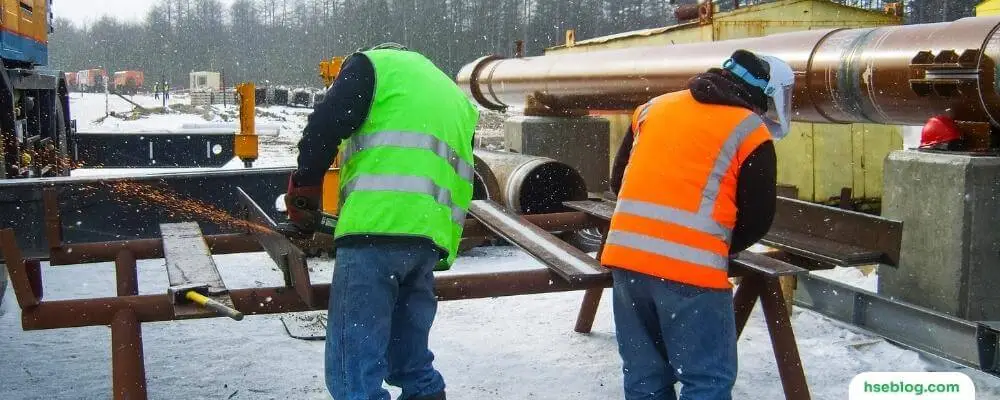The organization is an integral part of every business, regardless of size. The right organization helps to ensure that tasks can be completed efficiently and productively. However, another critical factor that should not be overlooked is its influence on workplace health and safety.
An organized workspace can mean improved visibility, more accessible access to tools and equipment, better communication between workers, and fewer accidents or injuries due to increased employee safety awareness. This blog post will explore how an organization affects health and safety from employee-level practices and macro-level management decisions within a business.
Influence Of Organization On Health And Safety
The organization is the company or corporate body and significantly influences health and safety. It must have a positive health and safety culture and produce an environment in which it:
- Manages health and safety throughout the organization, including the setting and publication of a health and safety policy and the establishment of a health and safety organizational structure;
- Measures the health and safety performance of the organization at all levels and departments. The performance of individuals should also be measured.
There should be clear health and safety targets and standards and an effective reporting procedure for accidents and other incidents so that remedial actions may be taken;
- Motivates managers within the organization to improve health and safety performance in a proactive rather than reactive manner.
The HSE has recommended that an organization needs to provide the following elements within its management system:
- A clear and evident commitment from the most senior manager downwards, which provides a climate for safety in which management’s objectives and the need for appropriate standards are communicated and in which constructive exchange of information at all levels is positively encouraged;
- An analytical and imaginative approach identifies possible routes to human factor failure. This may well require access to specialist advice, procedures, and standards for all aspects of critical work and mechanisms for reviewing them;
- Effective monitoring systems to check the implementation of the procedures and standards;
- Incident investigation and the effective use of information drawn from such investigations;
- Adequate and effective supervision with the power to remedy deficiencies when found.

It is essential to recognize that there are often reasons for these elements not being present, resulting in weak health and safety management. The most common reason is that individuals within the management organization do not understand their roles, which have never been properly explained to them. The higher a person is within the structure, the less likely he has received any health and safety training. Such training at the board level is rare.
Objectives and priorities may vary across and between different levels in the structure, leading to disputes affecting health and safety attitudes. For example, a warehouse manager may be pressured to block walkways to store a large order before dispatch.
Motivations can also vary across the organization, which may cause health and safety to be compromised. The production controller will require that components of a product are produced as near simultaneously as possible so that their final assembly is performed as quickly as possible. However, the health and safety adviser will not want to see safe work systems compromised.
To address some of these problems, the Health and Safety Commission (HSC) provided guidance in 2001 on the safety duties of company directors. Each director and the Board, collaborating, will be expected to provide health and safety leadership. The Board must ensure that all its decisions reflect its health and safety intentions and actively engage the workforce in improving health and safety. The Board will also be expected to keep itself informed of health and safety risk changes.

Checklist To Check Organizational Health & Safety Management Structure
The following simple checklist may be used to check organizational health and safety management structure.
Does the structure have:
- An effective health and safety management system?
- A positive health and safety culture?
- Arrangements for the setting and monitoring of standards?
- Adequate supervision?
- Effective incident reporting and analysis?
- Learning from experience?
- Clearly visible health and safety leadership?
- Suitable team structures?
- Efficient communication systems and practices?
- Adequate staffing levels?
- Suitable work patterns?

Causes For Failures In Organizational And Management Structures
HSG48 Reducing Error and Influencing Behaviour gives the following causes for failures in organizational and management structures:
- Poor work planning leads to high work pressure.
- Lack of safety systems and barriers
- Inadequate responses to previous incidents
- Management based on one-way communications
- Deficient coordination and responsibilities
- Poor management of health and safety
- Poor health and safety culture.
Organizational factors play a significant role in the health and safety of the workplace. However, this role is often forgotten when health and safety are being reviewed after an accident or when a new process or equipment is introduced.
Conclusion
In conclusion, the organization’s role in health and safety is paramount. The influence of an organization extends from setting clear health and safety standards to implementing measures to ensure adherence. Effective management structures foster a culture of safety, promote proactive measures, and facilitate clear communication. Moreover, such an organization prioritizes incident reporting and analysis, learning from experience, and involving all company levels in safety initiatives. In a well-structured organization, health and safety become integral to every process, thereby reducing incidents, promoting employee well-being, and enhancing overall productivity.

